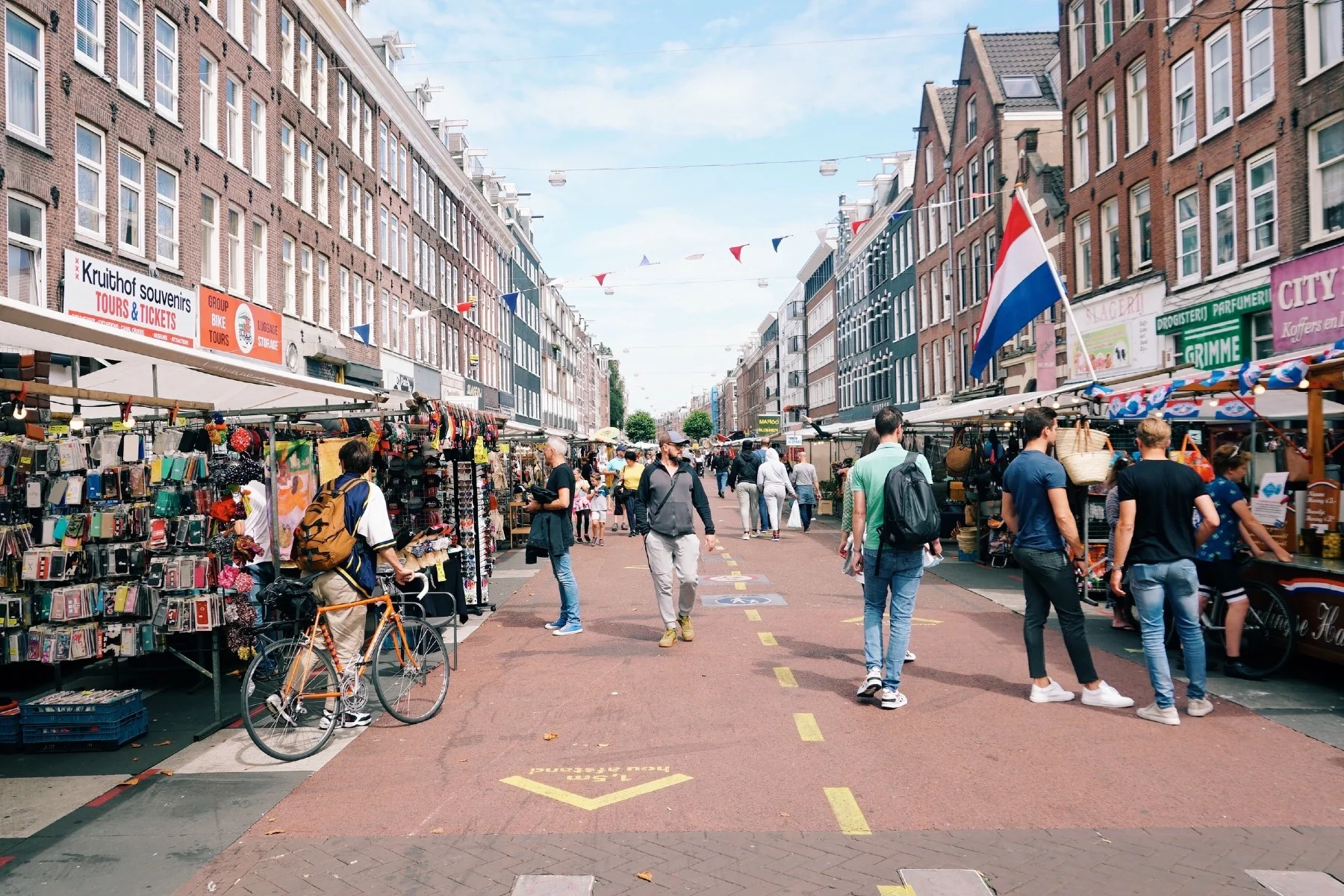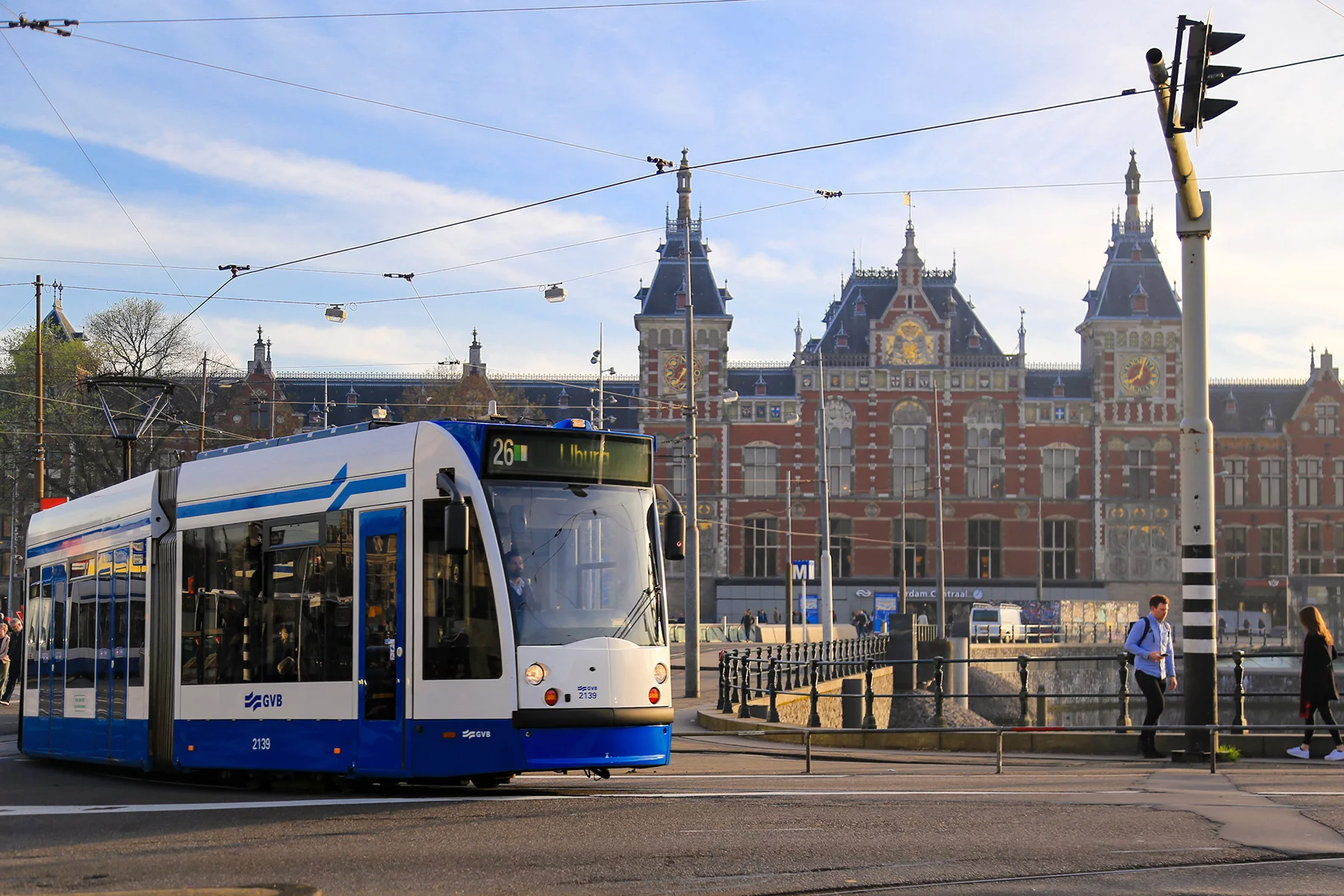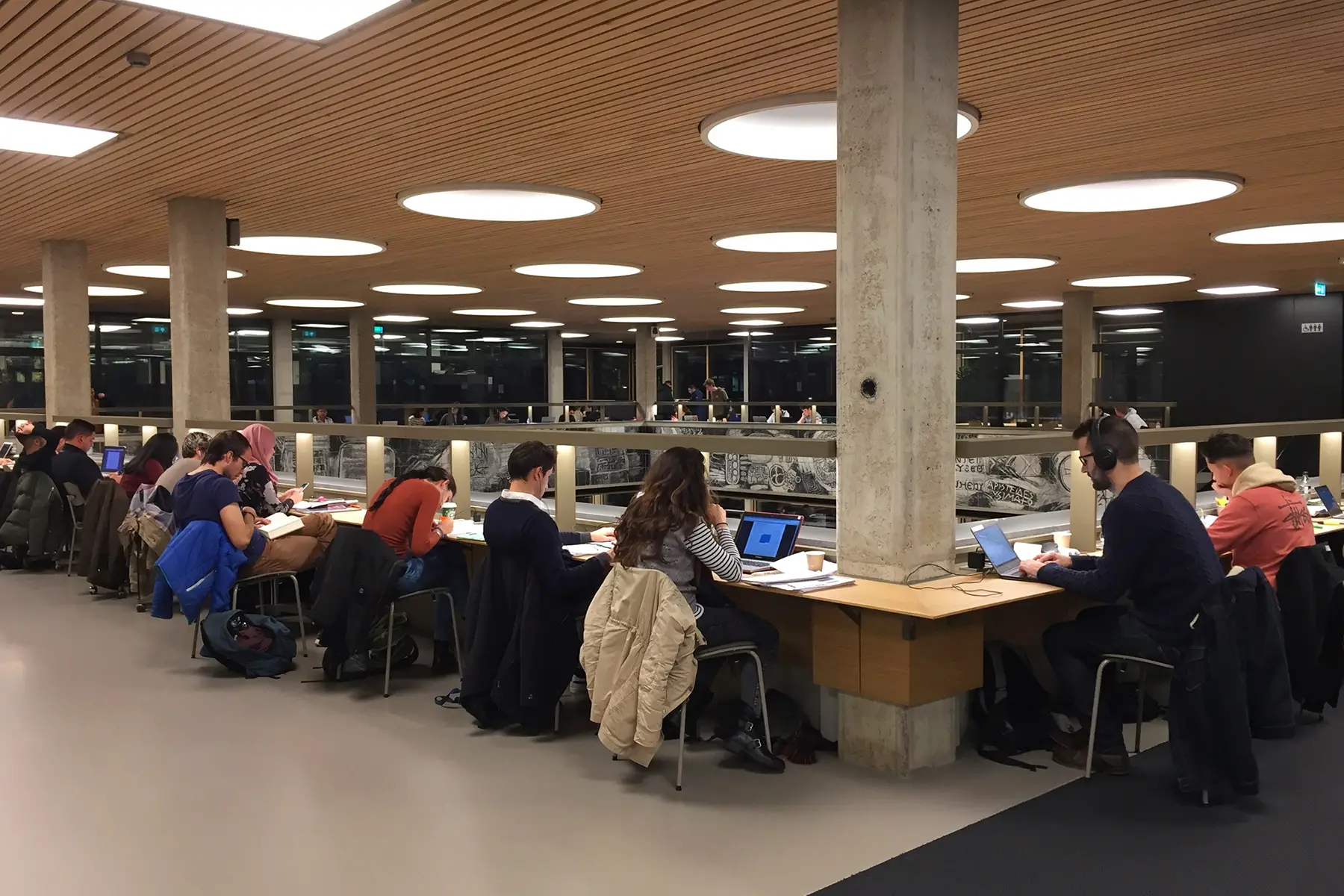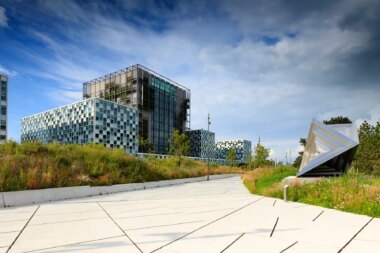With a thriving economy and one of the highest minimum wages in Europe, the Netherlands is a great place to bring home the literal and figurative cheese. But how does the country’s living expenses stack up?
From everyday costs like groceries and utilities to housing and healthcare, here’s a clear picture of the cost of living in the Netherlands and help you prepare for your new adventure.
Continue reading for the following information:
- Is the Netherlands’ economy good?
- The cost of living in the Netherlands in 2025
- Grocery costs in the Netherlands in 2025
- 2025 housing costs in the Netherlands
- The cost of healthcare in the Netherlands
- Internet and telecom prices in 2025
- The cost of clothing and footwear
- The cost of transportation in the Netherlands
- How much does leisure and entertainment cost?
- The cost of Dutch education and childcare
- How does the Netherlands compare to the rest of the world?
- Financial support for the cost of living in the Netherlands
- Tips on how to save money in the Netherlands
- Useful resources
CurrencyFair
If you’re moving money abroad, check out CurrencyFair. This well-known peer-to-peer currency exchange platform provides competitive rates, low fees, and transparent transactions. Experience efficient, cost-effective international transfers by joining CurrencyFair today.
Is the Netherlands’ economy good?
While a tiny country, the Netherlands packs a powerful punch. With a gross domestic product (GDP) of €1.122 billion (2024), it is the sixth-largest economy in the European Union (EU), trailing behind Germany, France, Italy, Spain, and Türkiye.
The GDP works out to €57,800 per capita, which the European Commission (EC) forecasts will grow by 1.3% in 2025 and 1.2% in 2026. This growth is only marginally below the EU average of 1.1% and 1.5%, respectively.

Inflation and disposable income in the Netherlands
Unfortunately for the Dutch, the GDP per capita doesn’t mean all residents have just under 58K to spend. The equivalized disposable income (i.e., the total net income of all household members divided by the weighted number of household members) is €27,091 per person per year. This is well above the EU average of €20,350 per person (2023).
Around 11.7% of the Dutch population is at risk of poverty, and only 2.8% of people can’t afford a meal with meat, chicken, fish, or a vegetarian equivalent every second day (2023). This again makes the Netherlands the fifth best-performing country in Europe.
The Central Bureau of Statistics (centraal bureau van statistiek – cbs) paints a somewhat rosier picture. It reports that a mere 4.4% of Dutch people are at risk of poverty, and 17% may experience social exclusion.
The low poverty line is likely explained due to the Netherlands’ high minimum wage standards and social security system. You can read more about the average income in our article on minimum wage in the Netherlands.
In terms of purchasing power, the Netherlands’ average headline inflation for 2025 and 2026 is projected to be 3.0% and 2.0%, respectively. This is around the same as the EU average of 2.3% and 1.9%.
The cost of living in the Netherlands in 2025
Unfortunately, the most recent data for Dutch household expenses is from 2020. This article will therefore use Statista’s estimations of the Netherlands’ household expenses. In 2025, people are expected to spend €2,226 per month.

Breaking down the costs:
| Annually | Monthly | |
| Food and non-alcoholic beverages | €3,160 | €263 |
| Housing | €6,670 | €556 |
| Healthcare | €900 | €75 |
| Clothing and footwear | €1,370 | €114 |
| Household | €1,770 | €148 |
| Hospitality and restaurants | €2,310 | €193 |
| Communication | €560 | €47 |
| Transport | €3,280 | €273 |
Keep reading for an overview of the cost of living expenses you might come across in your daily life.
Grocery costs in the Netherlands in 2025
Beer, wine, and liquor
If there is a Dutch word everyone around the world knows, it’s Heineken. And apartheid. Also gratis. But the point is that the Netherlands is a big name in alcoholic beverages. In 2023, the country was the fourth-largest beer producer in the EU, after Germany, Spain, and Poland. Dutch drinkers consume around 7.7 liters of pure alcohol per year (2020), with most people preferring beer.
A pilsner (25cl) in a local bar or restaurant will set you back €2.80–3.50, while a craft beer (33cl) costs between €5–8. A glass of wine, on the other hand, costs between €4.50–7.00.
Alcohol is a lot cheaper in supermarkets. You can get a beer from €0.40–2.60, depending on the make and size. A decent bottle of wine usually costs around €5–9. The price of most liquor (e.g., gin, vodka, or jenever) starts from €10–11, depending on your drink of choice.
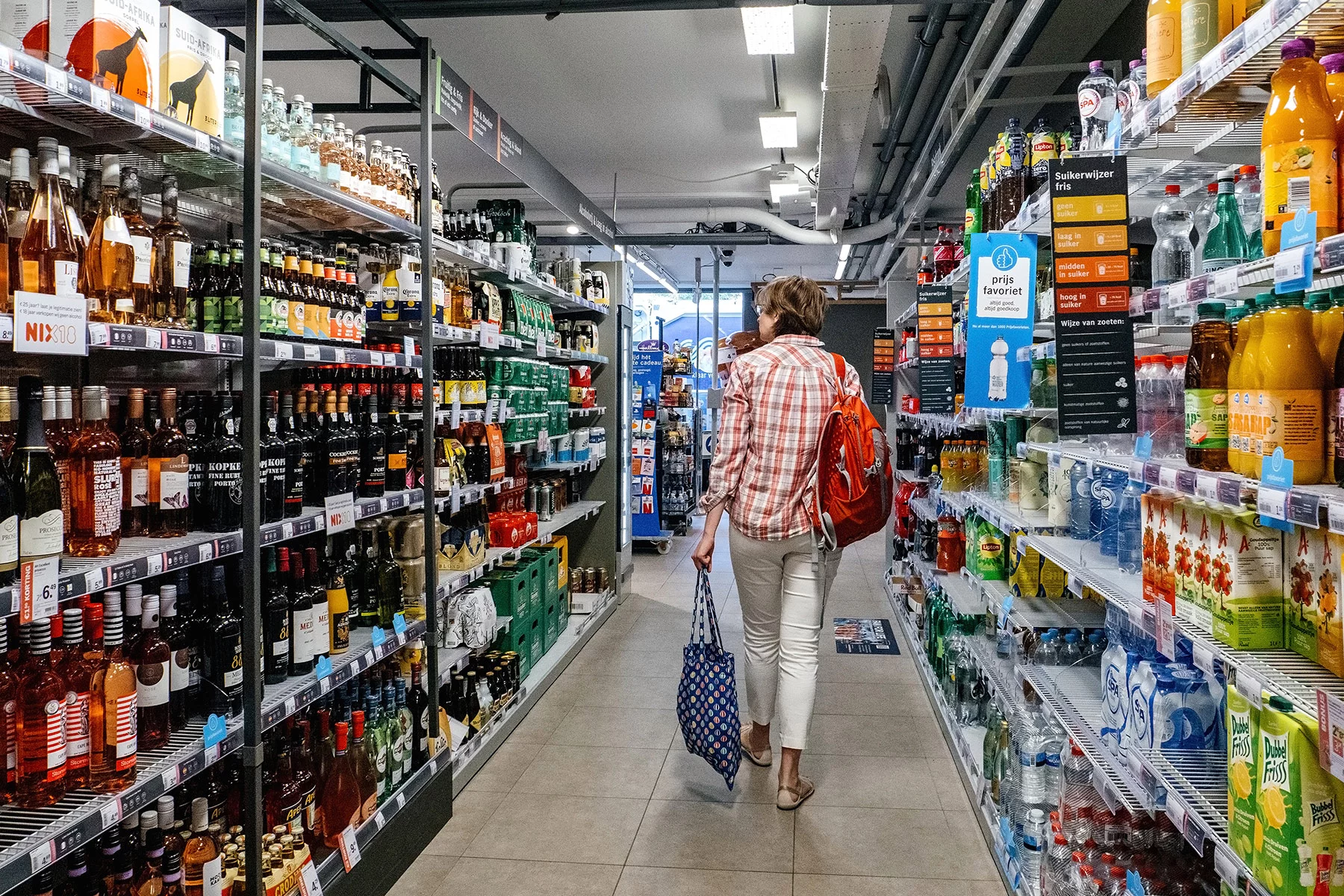
Food and drink
Groceries are the second-largest expense after housing costs. In 2025, households in the Netherlands will spend an average of €263 per month on food and non-alcoholic drinks.
The average price ranges* of basic supermarket items include:
| Product | Price range | Product | Price range |
| Apples (1 kilo) | €1.89–3.00 | Potatoes (1 kilo) | €1.85–2.50 |
| Bread (1 loaf) | €1.89–3.19 | Regular milk (1 liter) | €0.95–2.19 |
| Cheese (1 kilo) | €8.87–21.98 | Rice (1 kilo) | €1.59–3.99 |
| Coffee (1 kilo) | €8.58–30.76 | Tea (per bag) | €0.02–0.27 |
| Eggs (12) | €2.50–5.50 | Tomatoes (1 kilo) | €2.40–4.99 |
| Orange juice (1 liter) | €1.89–3.75 | Water (1 liter) | €0.33–1.75 |
Hygienic and household products
Hygienic and household products include everything from toothpaste and shampoo to dish soap (or washing-up liquid) and toilet bleach.
The average price ranges* of these necessities include:
| Product | Price range | Product | Price range |
| All-purpose cleaner (1 liter) | €0.99–3.79 | Shampoo (1 liter) | €2.00–22.03 |
| Deodorant (150 ml) | €2.74–7.99 | Soap (1 liter) | €2.64–25.91 |
| Dish soap (1 liter) | €1.55–10.00 | Tampons (per tampon) | €0.05–0.32 |
| Garbage bags (per bag) | €0.08–0.18 | Toilet paper (per roll) | €0.35–0.98 |
| Laundry detergent (per wash) | €0.12–0.65 | Toothpaste (75 ml) | €1.59–10.80 |
2025 housing costs in the Netherlands
Like elsewhere, Dutch households spend most of their income (32.9%) on housing. Statista estimates the average housing costs in 2025 will be around €556 per month. However, this seems very low, and readers are recommended to double that estimate.

Indeed, rent and property prices have soared in recent years, and finding affordable housing is a colossal challenge. Housing costs in the Netherlands are 33.8% higher than the EU average (2023).
Rent and property prices
Of course, housing costs vary significantly throughout the Netherlands. Studios and residential apartments in the Randstad (i.e., the country’s megalopolis) are comparatively more expensive than houses in rural and less popular areas. In fact, the Netherlands’ four largest cities – Amsterdam, Rotterdam, The Hague (Den Haag), and Utrecht – consistently rank among the top 10 most highly-priced places in Europe.
As of Q2 2024, the average monthly rent for a home in the Netherlands is €18.79 per square meter (i.e., around €1,409 for a home of 75 m2). Potential homeowners will pay an average of €3,722 per square meter. The average property price of existing builts is more than €384,300 for apartments and €504,400 for family homes (November 2024). The ING Bank expects this to rise by 5.5% in 2025.
Depending on the location, you can expect the following average prices:
| Average monthly rent* | Average rent per square meter* | Average property price** | Average property price per square meter** | |
| Amsterdam | €2,275 | €27.57 | €626,759 | €8,507 |
| Groningen | €1,156 | €18.00 | €339,274 | €3,326 |
| Rotterdam | €1,617 | €20.13 | €450,721 | €4,379 |
| The Hague | €1,719 | €20.07 | €450,705 | €4,304 |
| Utrecht | €1,651 | €21.52 | €467,335 | €5,682 |

The most expensive municipalities are Amsterdam, Laren, Bloemendaal, and Heemstede. However, if you’re looking to live in the Netherlands on a budget, the cheapest places to move to are:
| To rent | Average rent per square meter* | To buy: | Average property price** | Average property price per square meter** |
| Apeldoorn | €14.72 | Brunssum | €244,000 | €2,160 |
| Helmond | €13.10 | Eemsdelta | €249,500 | €2,119 |
| Leeuwarden | €13.21 | Het Hogeland | €225,000 | €2,151 |
| Enschede | €13.66 | Kerkrade | €249,000 | €2,040 |
| Heerlen | €12.34 | Pekela | €237,000 | €1,995 |
You can read more about the real estate market and property prices in our articles on renting and buying property in the Netherlands. Our country article on where to live highlights popular cities for expats.
Utility bills: water, gas, electricity
Utility prices in the Netherlands are both higher and lower than those of other EU countries. For example, gas costs slightly less than the EU average, while water and electricity cost more.

Dutch households pay, on average, €2.39/cubic meter for water. During the second half of 2023, gas cost €0.0802 kilowatt/hour (EU average: €0.0891). The average price for electricity was €0.2659 kilowatt/hour (EU average: €0.2226).
In total, you can expect to pay around €126–176 on utility costs, depending on your consumption and property size. Our article on utilities in the Netherlands explains the topic in more detail.
The cost of healthcare in the Netherlands
Everyone living and working in the Netherlands must have health insurance. The country’s public healthcare system has (almost) universal coverage, though some copayments are required for prescription meds and certain medical procedures.
Many locals and expats top up their mandatory insurance policy with additional coverage. This allows for shorter waiting times, a wider choice of doctors and specialists, and access to other healthcare services, such as dentistry or vision care.
Basic insurance packages average around €159 per month (2025). The more comprehensive the plan, the higher the cost will be. Parents and older adults may face higher premiums depending on their needs.
In 2025, Dutch households are expected to spend an average of €75 per month on their health (excluding insurance premiums).
Internet and telecom prices in 2025
While relatively expensive, the cost of internet and other telecommunication services in the Netherlands differs greatly depending on the provider and the type of connection or service.
For example, standard telecom packages that include internet, TV, and home phone cost more than internet-only plans. Likewise, some companies offer a free SIM card or mobile phone plan if you purchase the more expensive telecom package.

You can install fiber broadband starting from €27.50 a month, though your internet connection might not be great. Of course, the price rises when you want to increase the speed or add (more) TV channels. Before you sign up for a deal, make sure you compare telecom plans on an online platform such as Independer.
In 2025, the average communication costs in the Netherlands will amount to €47 per month.
The cost of clothing and footwear
Clothing and footwear in the Netherlands are fairly similarly priced to those in surrounding countries. In 2025, households are expected to spend an average of €114 per month on their wardrobe.
The exact price varies greatly, of course, depending on the type and brand. For example, underwear costs around €3.00–9.95. Dresses and jeans, on the other hand, cost between €40–120. Business shoes for men and women range from €60–225.
Naturally, designer clothes and accessories are much more expensive.

The cost of transportation in the Netherlands
In 2025, people will spend an average of €273 per month on transportation. This makes it the third largest cost of living expense in the Netherlands, after housing and groceries.
Public transport
The Netherlands has an excellent public transportation network of buses and trains, and sometimes metros and trams. There are a couple of different providers, but fares are relatively consistent throughout the country. According to Numbeo’s cost of living in the Netherlands, a single bus fare costs €2.20–4.80, depending on the duration of the trip.
If you are planning to commute to work, it’s recommended you get a yearly plan to travel at a discounted cost. For example, the NS (i.e., the national train service) has multiple subscription plans for free or reduced travel costs outside rush hour.
Driving and vehicle costs
Driving your own vehicle is a costly business in the Netherlands. According to the 2022 Car Cost Index, it is the third most expensive country in Europe to own a car, after Switzerland and Norway. Dutch drivers pay an average of €1,166 a year (2022).

Beyond the costs of lessons, a driving license, and the actual purchase of the vehicle, you’ll need to budget for:
- Car insurance – the mandatory Third Party Liability insurance starts from €35 a month
- Quarterly Road Tax – the amount is largely based on your vehicle and fuel type
- Fuel costs – as of January 2025, gasoline costs €1.96 per liter, and diesel costs €1.74 per liter
- Maintenance – cars must routinely pass inspection, which usually costs around €25–70 depending on the fuel type
Learn more about the costs, mandatory insurance, and driving regulations by reading our article on driving in the Netherlands.
How much does leisure and entertainment cost?
In 2025, Dutch households will spend roughly €193 on hospitality and restaurants.
Movie theaters and cinemas
The average cinema ticket in the Netherlands costs around €13–15, depending on the location. Some movies, like 3D, are subject to a surcharge. Likewise, some movie theaters offer discounted tickets for young persons, students, and seniors over 65.
Restaurants
The Netherlands boasts 125 Michelin stars, and a date night there can set you back quite a bit. However, depending on your tastes and location, dining out can be quite affordable.
A meal at a modest restaurant costs roughly €18–30, excluding drinks. A three-course meal at a mid-range restaurant, on the other hand, can set you back €100–140 per person.
Tips are usually included in the sales tax. However, if you are feeling generous, you can leave a 5–10% tip.

Sports
A gym membership will set you back €25–50 per month, depending on your location and sporting needs. Before you sign up for a plan, it’s worth trying out multiple gyms. Some also offer day passes that allow you to save on a monthly membership.
The cost of Dutch education and childcare
Childcare
Working parents with (young) children may need to arrange for childcare from time to time. In the Netherlands, finding an affordable solution can be challenging. Options include crèches, daycares (kinderopvang), and independent childminders.
The Dutch government has set a maximum hourly rate for public childcare facilities. In 2024, these were €9.12–10.25 per hour, depending on their services. However, childcare providers may charge higher fees; parents are expected to pay these themselves.
You can also send your child to private or international childcare, where average rates go up to €13,20 an hour. While uncommon, some expat families choose to hire a nanny or au pair. Nannies have an average hourly rate of €16, whereas au pairs require room and board, as well as a minimum salary of €300–340 a month.
Visit our article on childcare in the Netherlands to learn more about available options, as well as childcare benefits.
Children’s education
Public schools in the Netherlands are funded by the government and don’t charge tuition fees. Parents may be asked for a “voluntary” contribution (eigen bijdrage – no, it’s not voluntary unless you want your child to miss out) to pay for outings. Classes are taught in Dutch, and extra lessons will be made available if your child isn’t proficient.

Expat families often prefer to send their kids to a private or international school. These come with hefty school fees, which depend on your child’s age, the school’s location, and the curriculum. For example, the cost of international primary and secondary schools ranges from €5,000–€22,000 per year.
Discover more about the costs and curriculums by reading our article on international schools in the Netherlands.
University tuition fees
While not completely unreasonably priced, universities in the Netherlands are much more expensive than in neighboring countries like Belgium, France, Germany, Italy, and Sweden.
Regular bachelor and master courses at a public university in the Netherlands typically cost €2,530 per year for EU students (2024), though charge higher fees for non-EU students. Private universities (e.g., MBA programs) average between €7,000 and €70,000 a year.
Our article on studying in the Netherlands covers this topic in more detail.
How does the Netherlands compare to the rest of the world?
The Netherlands performs particularly well in the OECD Better Life Index, which measures standards of living. The country shines in the fields of civic engagement, education, employment, environmental quality, life satisfaction, safety, social networks, and work-life balance.
Likewise, the Human Development Index ranks the Netherlands as the 10th best in the world.

Amsterdam is the city with the highest rank on the 2024 Mercer’s Quality of Living Index (6th). It stands below places like Zurich (1st) and Copenhagen (4th) but above Sydney (12th) and Berlin (19th). Meanwhile, The Hague ranks (14th), outperforming other major cities like Paris (34th), Brussels (40th), London (40th), and Rome (59th).
The cost of living in Amsterdam
Amsterdam is the capital of the Netherlands, home to roughly 913,700 residents. Every year, it draws 10,000s of hopefuls who want to make the city their stomping ground. This, of course, also explains the exorbitantly high housing prices.
Compared to other capital cities, Amsterdam’s cost of living is (as of January 2025):
- 41.1% cheaper than New York (the US)
- 15.7% cheaper than London (the UK)
- 28.5% more expensive than Berlin (Germany)
- 71.9% more expensive than Warsaw (Poland)
- 130.0% more expensive than Ankara (Türkiye)
- 284.4% more expensive than Delhi (India)
The cost of living in Rotterdam
As the second largest city in the Netherlands, Rotterdam is an urban hotspot that attracts increasingly more expats. After sustaining catastrophic damage during World War II (WW2), the city literally rose from the ashes and rebuilt itself as one of the country’s most architecturally innovative and experimental places.

As of January 2025, the cost of living in Rotterdam is:
- 50.8% cheaper than New York (the US)
- 29.6% cheaper than London (the UK)
- 16.5% cheaper than Amsterdam
- 7.3% more expensive than Berlin (Germany)
- 43.6% more expensive than Warsaw (Poland)
- 92.0% more expensive than Ankara (Türkiye)
- 212.0% more expensive than Delhi (India)
The cost of living in The Hague
As the country’s political center and home to the International Court of Justice, The Hague offers a good quality of life and great access to international schools. The city is also close to the Netherlands’ most popular beach, Scheveningen.
The cost of living in The Hague is typically cheaper than in Amsterdam or Rotterdam, as well as:
- 52.4% cheaper than New York (the US)
- 31.9% cheaper than London (the UK)
- 19.2% cheaper than Amsterdam
- 3.8% more expensive than Berlin (Germany)
- 38.9% more expensive than Warsaw (Poland)
- 85.8% more expensive than Ankara (Türkiye)
- 210.5% more expensive than Delhi (India)
The cost of living in Utrecht
Utrecht’s central location and proximity to Amsterdam, excellent transport links, and large student population have made this the fourth-largest city in the Netherlands. Known for its historic city center, Utrecht has a diverse cultural scene with interesting museums and lively festivals.

As of January 2025, the cost of living in Utrecht is:
- 51.7% cheaper than New York (the US)
- 30.9% cheaper than London (the UK)
- 18.0% cheaper than Amsterdam
- 5.3% more expensive than Berlin (Germany)
- 40.9% more expensive than Warsaw (Poland)
- 88.5% more expensive than Ankara (Türkiye)
- 215.0% more expensive than Delhi (India)
Financial support for the cost of living in the Netherlands
The high cost of living in the Netherlands is a major point of concern, especially among voters. In September 2024, the new government declared it would increase social security benefits, lower income taxes, and reduce the aid sent to underdeveloped economies.
However, housing costs keep rising, and health insurance costs €158 on average in 2025. As such, it’s unsure what the future will bring in terms of savings and purchasing power.
If you need help covering the cost of living in the Netherlands and you are eligible, you can apply for social security benefits. For example, low-income households can apply for a social benefit (bijstandsuitkering), which ensures their income is at least €1,308.45 for single persons and €1,869.21 for spouses or civil partners.
Other benefits that can help you with the cost of living in the Netherlands:
- Child benefits – to help with the cost of raising a child or childcare
- Invalidity benefits – for employees who are partially or fully incapacitated to work
- Long-term care benefits – for dependent, disabled, or elderly persons who require specific equipment or long-term care
- Sickness pay – available to workers who are unable to work due to an illness or an accident
- Survivor’s pension – for dependents who lose their parents or (ex)partner
- Unemployment benefits – to help people who are in between jobs
If you are unable to pay for food and groceries, you can contact the local food bank (voedselbank) for support.
Tips on how to save money in the Netherlands
All affordability is relative to your household income and size. A single bachelor may have more to spend than a family of four. Here are some tips for saving money while living in the Netherlands:
- Shop smartly at local markets – local markets often have fresh produce, bread, and other goods at a lower price than supermarkets. Time your visit well: there are better deals around closing time when vendors try to clear their stock.
- Check the weekly ads and plan meals ahead – use the weekly advertising flyers (reclamefolders) to see which supermarket has the best deals. You can save more money by planning ahead, as Dutch supermarkets often have promotions like “1+1 free” on bulk items.
- Dine out strategically – when you are eating out, look for daghap specials, as these are often more affordable than other dinner items. There are also many discount platforms (such as Social Deal) that offer bargain outings.
- Embrace cycling, public transport, and ride-sharing services – the Netherlands has a well-connected public transport system and is bike-friendly. Opt for a monthly or yearly transport pass or use a bike instead of driving. For longer commutes, consider carpooling with colleagues or friends or using a ride-sharing app to lower your travel costs.
- Shop at second-hand stores – the Netherlands has many thrift stores (like Rataplan) where you can find affordable clothing, furniture, and household items. It’s also eco-friendly!
- Use energy wisely – save on heating and electricity by insulating your home, using energy-efficient appliances, and taking advantage of off-peak energy tariffs (e.g., to do your washing). You can also lower the thermostat a little and wear double layers inside the home.
- Review your contracts – regularly compare energy, internet, and phone plans to ensure you’re getting the best deal.
Useful resources
- Consumers Union (Consumentenbond) – official website of the Netherlands’ independent watchdog for consumers
- Food Banks Netherlands (Voedselbanken Nederland) – website with information on food banks in the Netherlands


